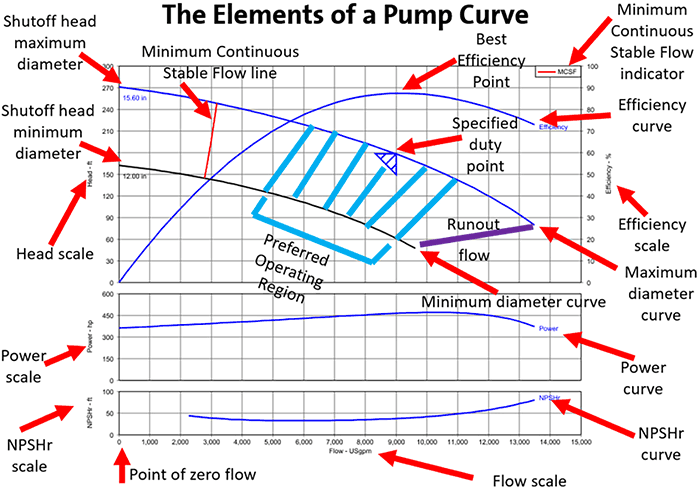The capacity and pressure needs of any system can be defined with the help of a graph called a system curve. Similarly the capacity vs. pressure variation graph for a particular pump defines its characteristic pump performance curve.
The pump suppliers try to match the system curve supplied by the user with a pump curve that satisfies these needs as closely as possible. A pumping system operates where the pump curve and the system resistance curve intersect. The intersection of the two curves defines the operating point of both pump and process. However, it is impossible for one operating point to meet all desired operating conditions. For example, when the discharge valve is throttled, the system resistance curve shift left and so does the operating point.
Description: centrifugal-pump-curves
Figure 10: Typical System and Pump Performance Curves
Developing a System Curve
The system resistance or system head curve is the change in flow with respect to head of the system. It must be developed by the user based upon the conditions of service. These include physical layout,
process conditions, and fluid characteristics. It represents the relationship between flow and hydraulic losses in a system in a graphic form and, since friction losses vary as a square of the flow rate, the system curve is parabolic in shape. Hydraulic losses in piping systems are composed of pipe friction losses, valves, elbows and other fittings, entrance and exit losses, and losses from changes in pipe size by enlargement or reduction in diameter.

